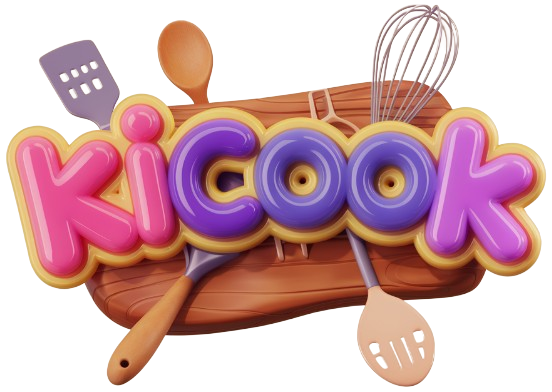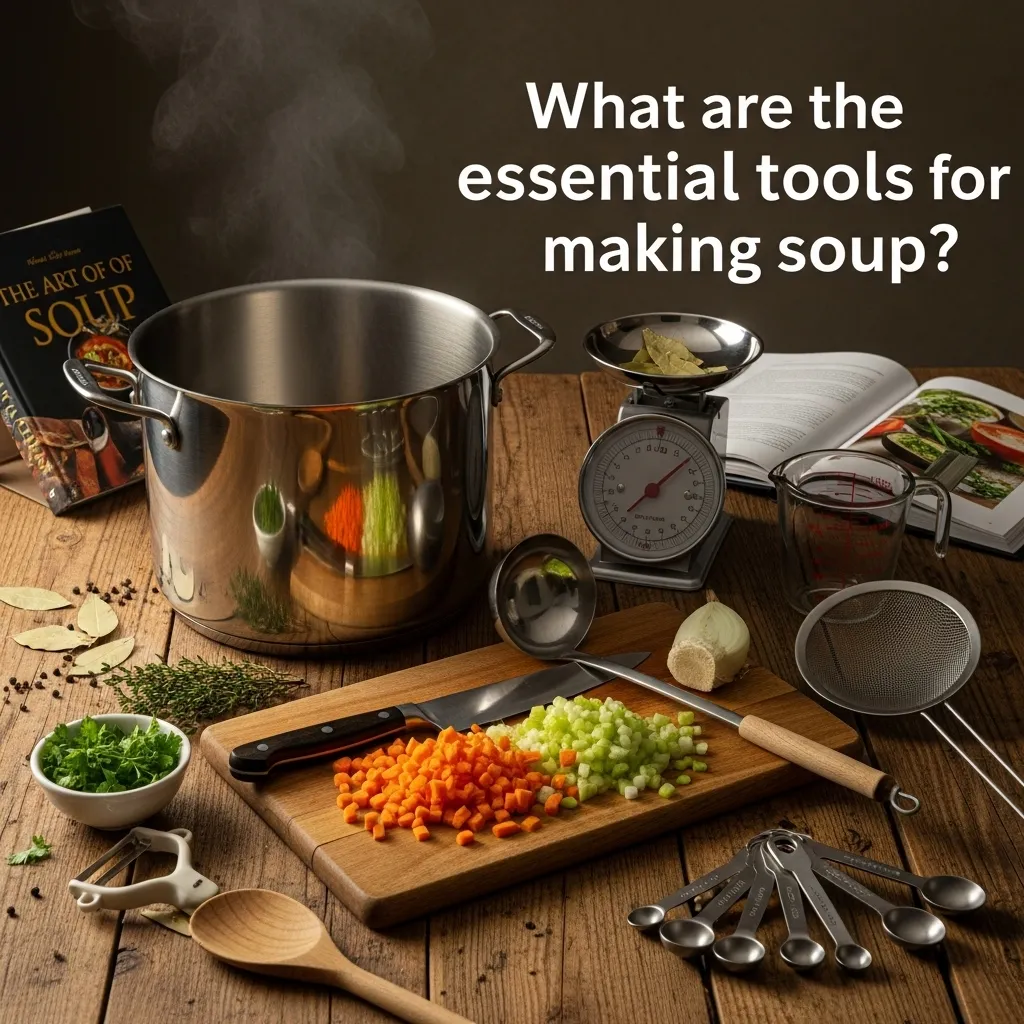The essential tools for making soup are a great pot and a sharp knife. With just these two items, you can create something truly wonderful.
My Favorite Kitchen Companions: The Essential Tools for Making Soup
There’s nothing quite like the feeling of simmering a pot of soup on the stove. The steam fogs up the windows, the aroma fills the house, and you just know something good is happening. Over years of making everything from simple chicken noodle to complex ramen broths, I’ve learned that while passion is the main ingredient, having the right tools makes the process smoother, safer, and a whole lot more enjoyable.
You don’t need a kitchen stuffed with single-use gadgets. In fact, the best soup-making toolkit is built on versatile, reliable workhorses. Let’s walk through my must-have items, the ones I reach for every single time.
The Foundation: Pots, Pans, and Cutting Boards
First thing’s first: you need something to cook in.
A Heavy-Bottomed Pot or Dutch Oven
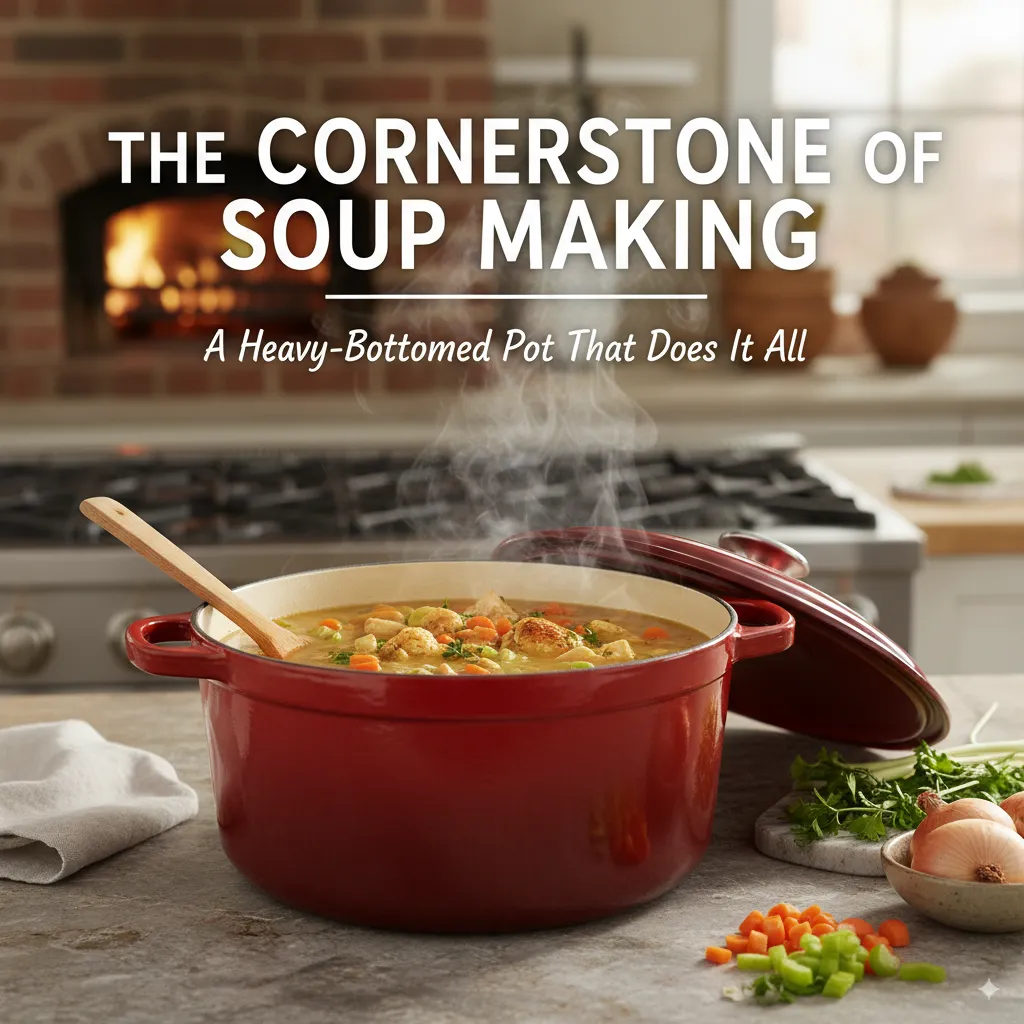
This is, without a doubt, the cornerstone of soup making. I strongly prefer a heavy-duty Dutch oven, like those made by Le Creuset or Staub. Why? Their thick walls and heavy base distribute heat evenly, preventing those pesky hot spots that can cause your sautéed onions to burn or your soup to scorch.
A good 6 to 8-quart size is perfect for most family-sized batches. It moves seamlessly from the stovetop for browning meats and sweating vegetables straight into the oven for long, slow braises. It’s the one pot that truly does it all.
A Sharp Chef’s Knife
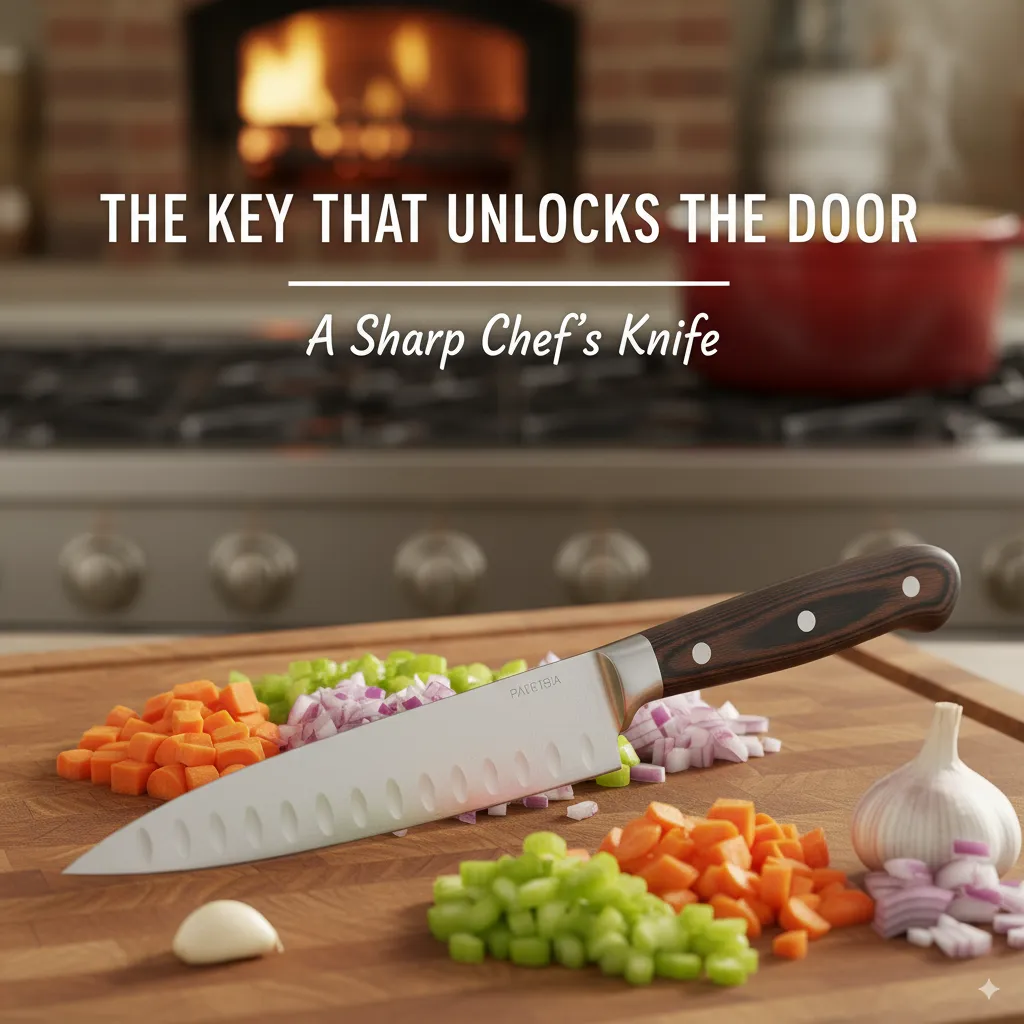
If the pot is the home for your soup, the knife is the key that unlocks the door. A sharp, high-quality 8-inch chef’s knife is your best friend. Dull knives are dangerous and make prep work a chore. A good knife allows you to chop, dice, and mince with precision and ease, ensuring your vegetables cook evenly. You don’t need a full block of twenty knives; just one great one that feels good in your hand will change your cooking life.
A Sturdy Cutting Board
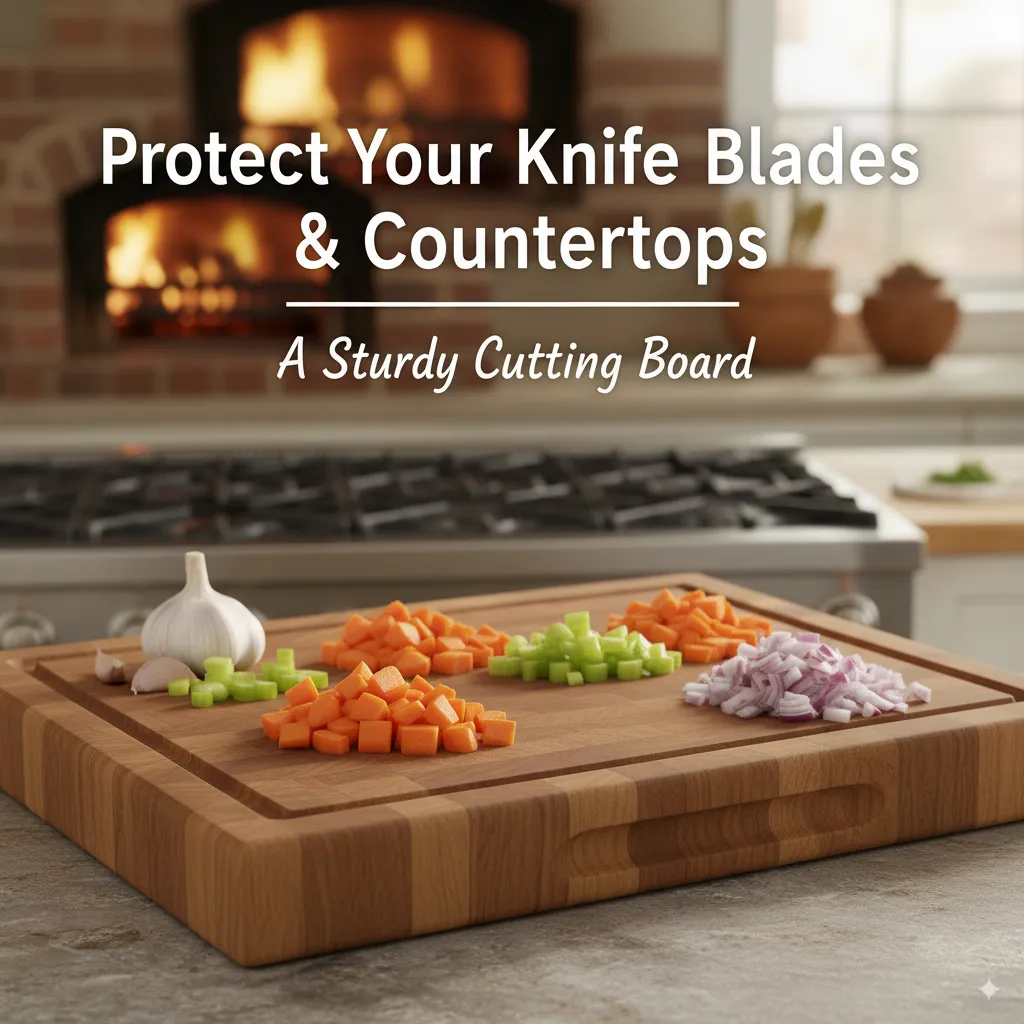
Protect your knife blades and your countertops with a solid cutting board. I like large wooden or composite boards because they are gentle on knife edges and provide plenty of room for all your prepped ingredients. Having a stable surface is a simple step for safety and efficiency.
The Prep Squad: For Chopping, Slicing, and Dicing
Once you have your big three, these tools will speed up your preparation time immensely.
A Reliable Vegetable Peeler
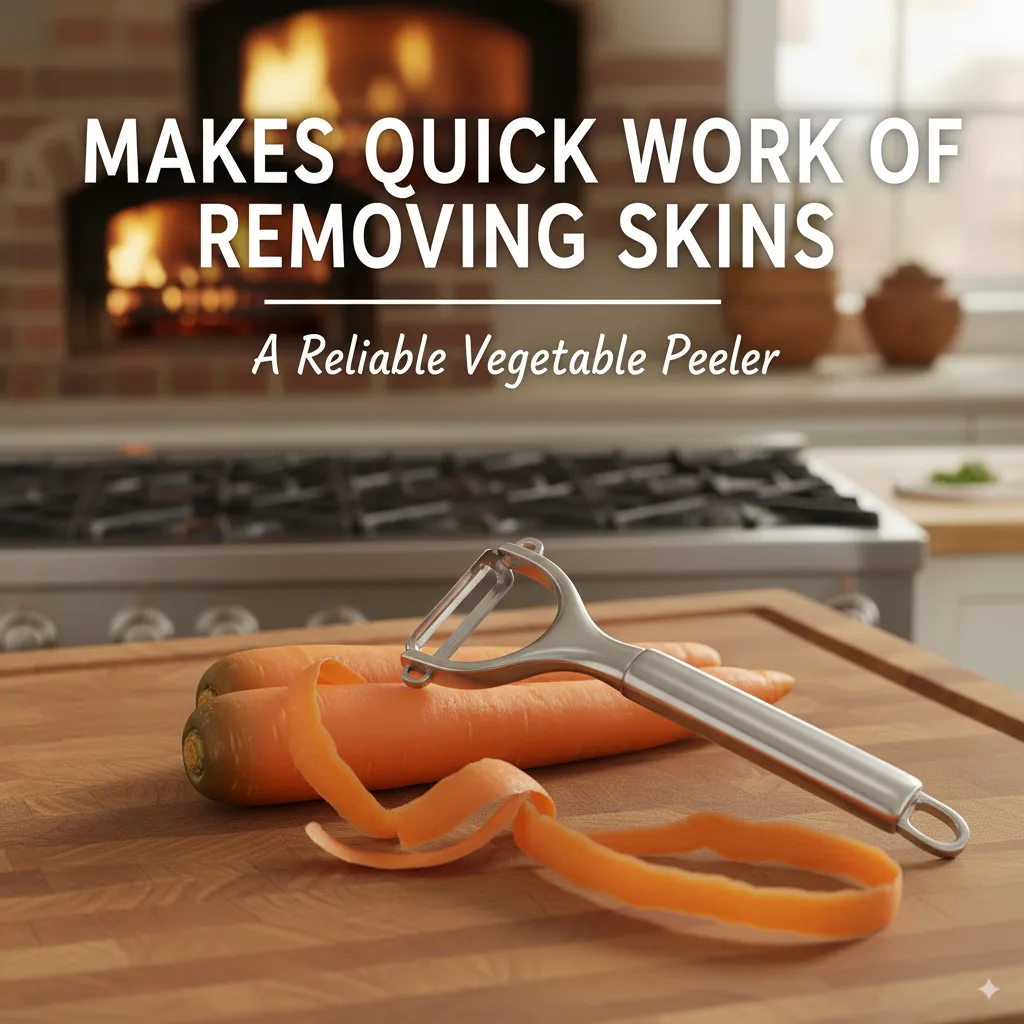
Whether it’s carrots, potatoes, or butternut squash, a smooth-gliding peeler makes quick work of removing skins. A Y-shaped peeler often gives more control and is easier on the wrists.
A Good Set of Measuring Cups and Spoons
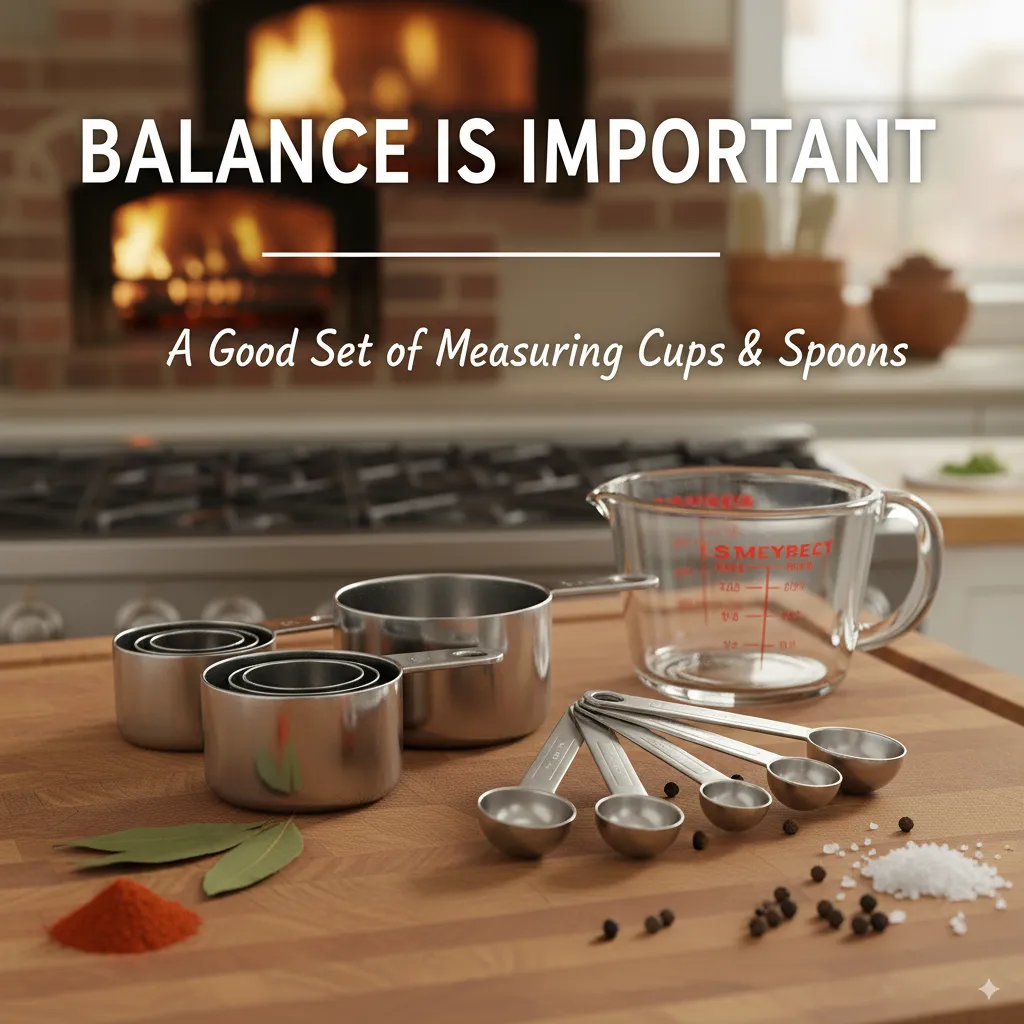
Soup is often forgiving, but balance is still important. Especially when you’re adding potent ingredients like salt, spices, or a bay leaf, accurate measuring spoons ensure you get the flavor just right. Liquid measuring cups (with the spout) and dry measuring cups are both necessary for following recipes closely.
Mixing Bowls
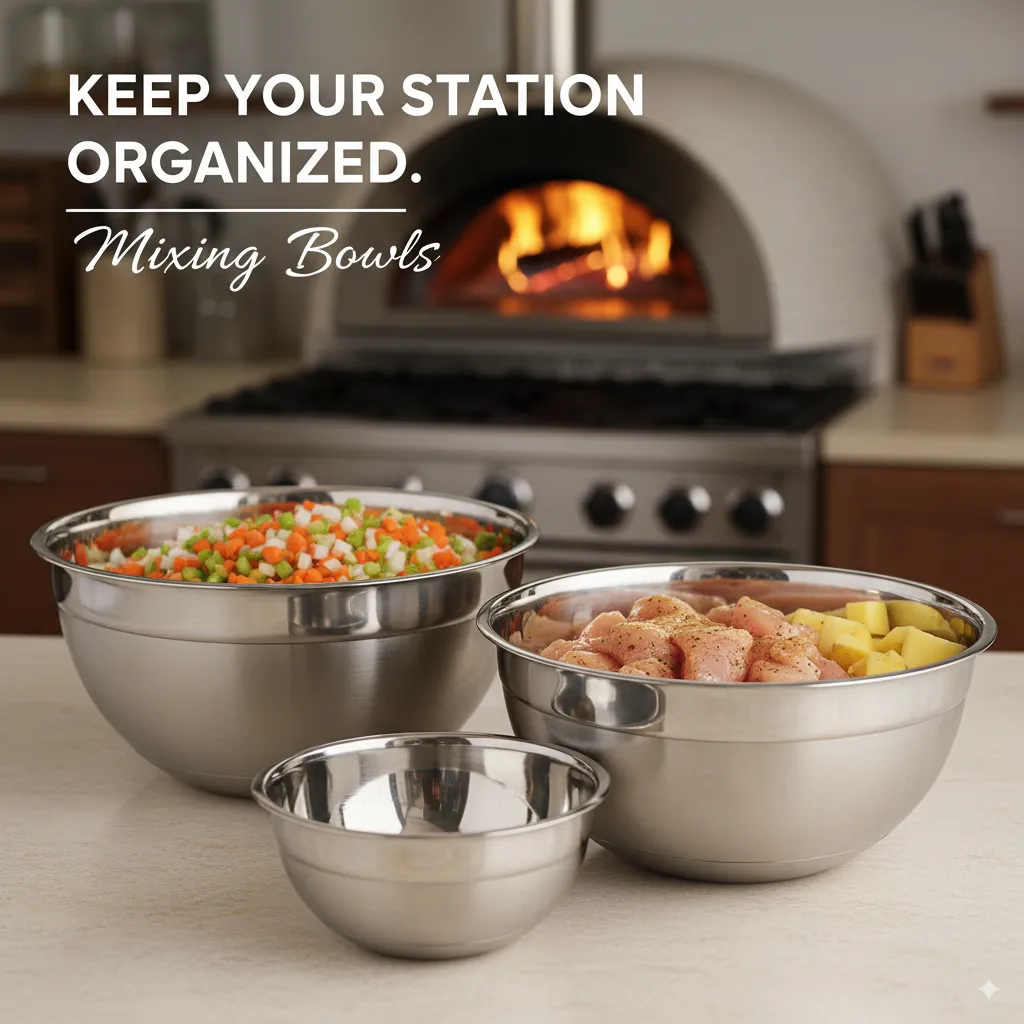
You’ll need a place to hold your prepped mirepoix (that’s the classic onion, carrot, and celery mix), your chopped potatoes, and your seasoned meat. A set of nested stainless steel or glass bowls keeps your station organized and makes adding ingredients a breeze.
The Cooking Crew: For Simmering and Flavor Building
This is where the magic happens. These tools help you build layers of flavor.
Wooden Spoons and a Ladle
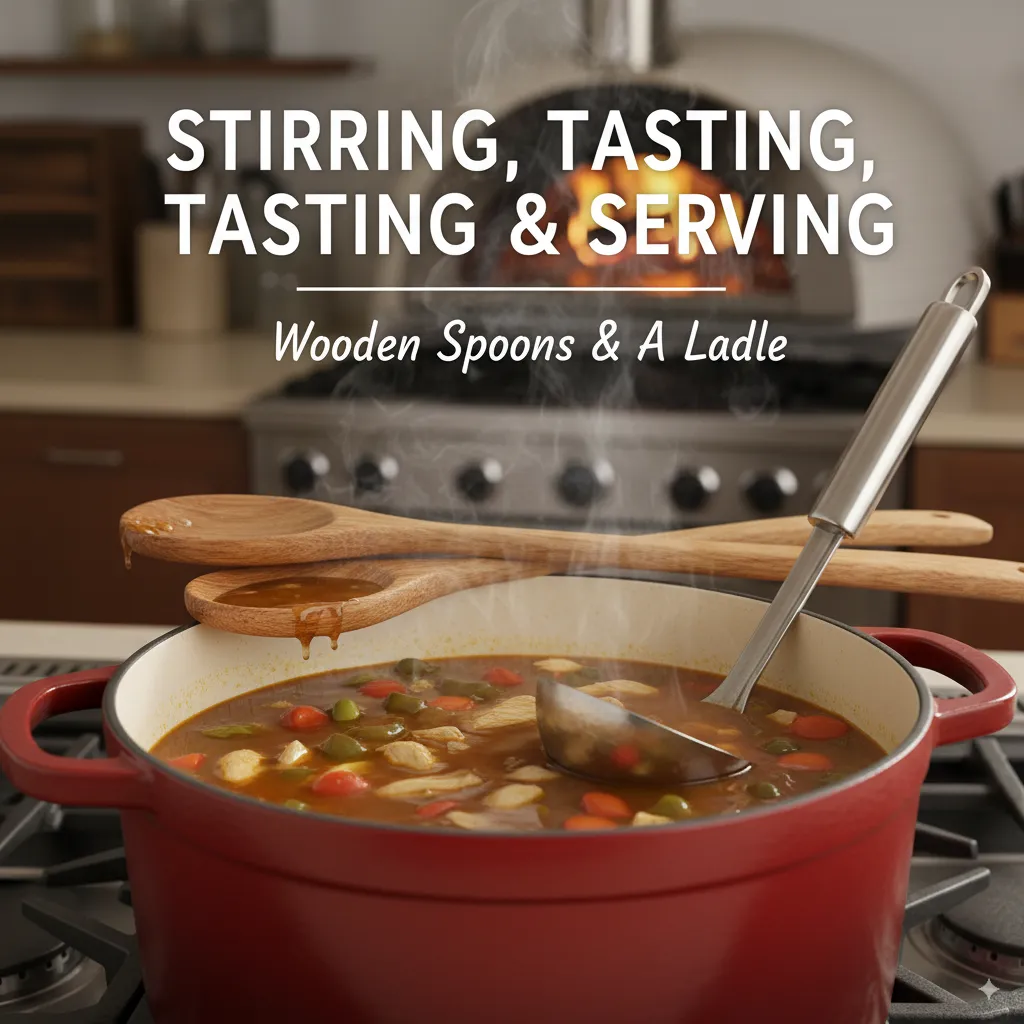
A set of sturdy wooden spoons is perfect for stirring, scraping up the tasty browned bits from the bottom of the pot (called fond), and tasting without scratching your beautiful Dutch oven. And of course, you need a strong ladle for serving. Look for one with a good hook on the end for resting on the pot’s edge.
Tongs and a Spider Strainer
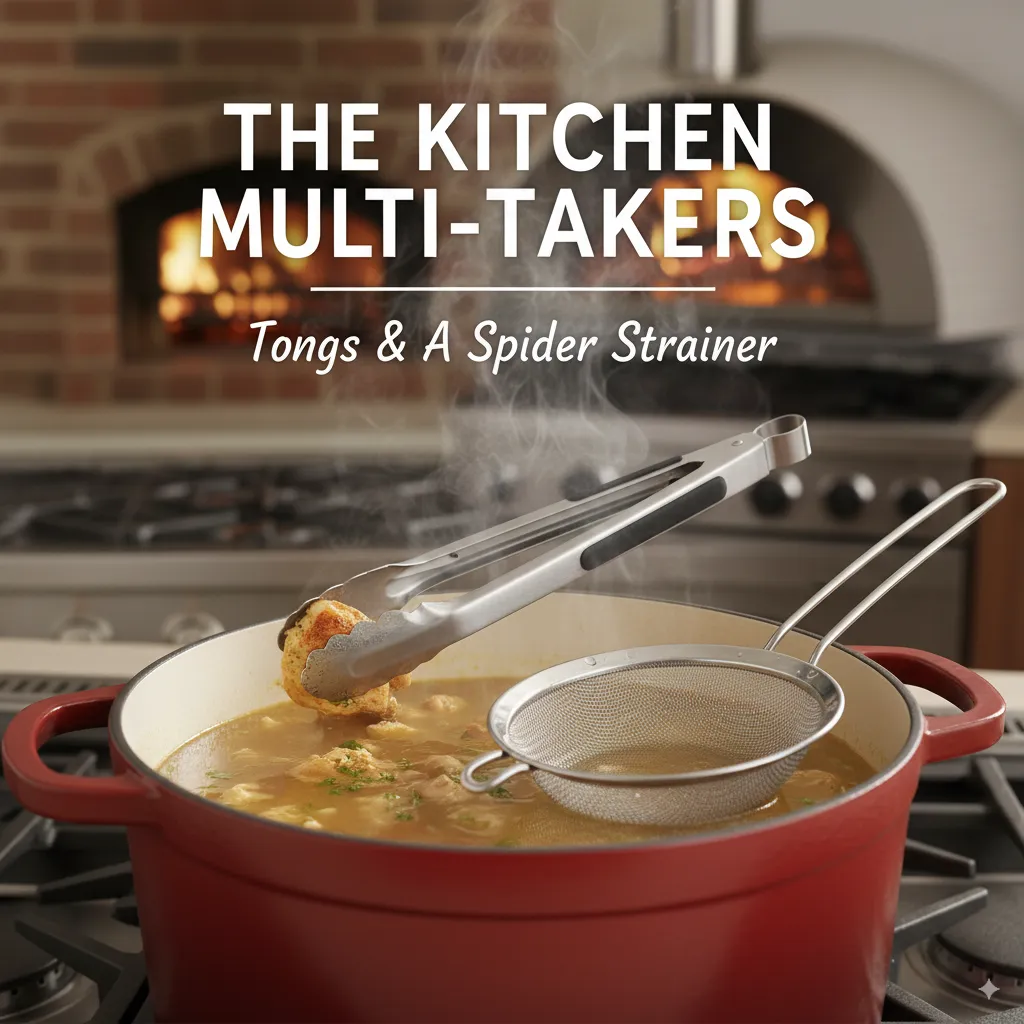
Tongs are fantastic for turning pieces of browning meat or fishing out a bay leaf. A spider strainer, that basket-like skimmer with a long handle, is brilliant for removing solids from stock or skimming off a bit of excess fat from the surface.
An Instant-Read Thermometer
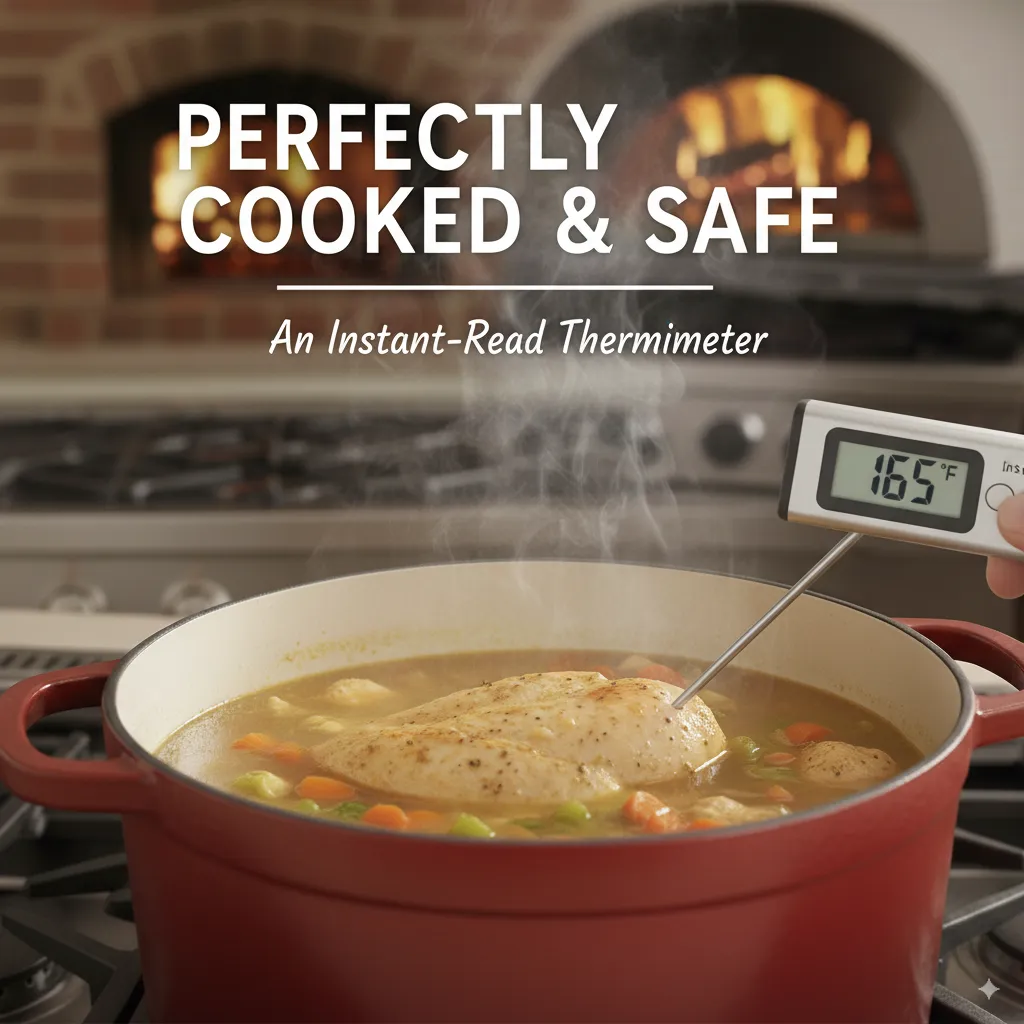
If your soup involves cooking chicken, beef, or other meats to a safe temperature, a digital thermometer takes all the guesswork out. It’s a small tool that provides huge peace of mind, ensuring your food is both safe and perfectly cooked, not overdone.
The Finishing Touches: For Blending and Serving
How you finish your soup can elevate it from good to incredible.
An Immersion Blender
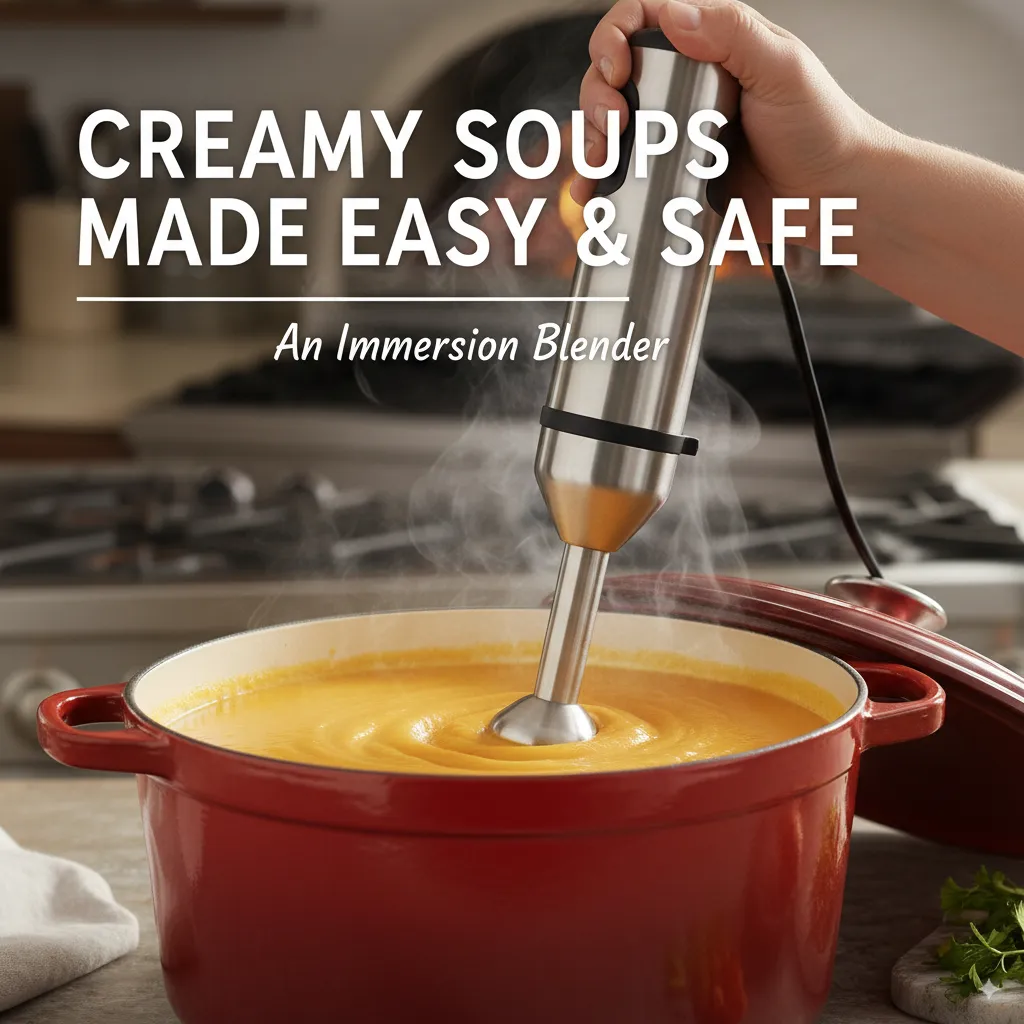
This is my number one recommended tool for creamy soups. Instead of transferring hot, liquid soup in batches to a standing blender (a potentially dangerous task), you can simply submerge this handy stick blender right into the pot and puree until smooth. It’s easy, safe, and minimizes cleanup. It’s a true workhorse for soups like tomato bisque, butternut squash, or potato leek.
A Standard Blender (for some tasks)
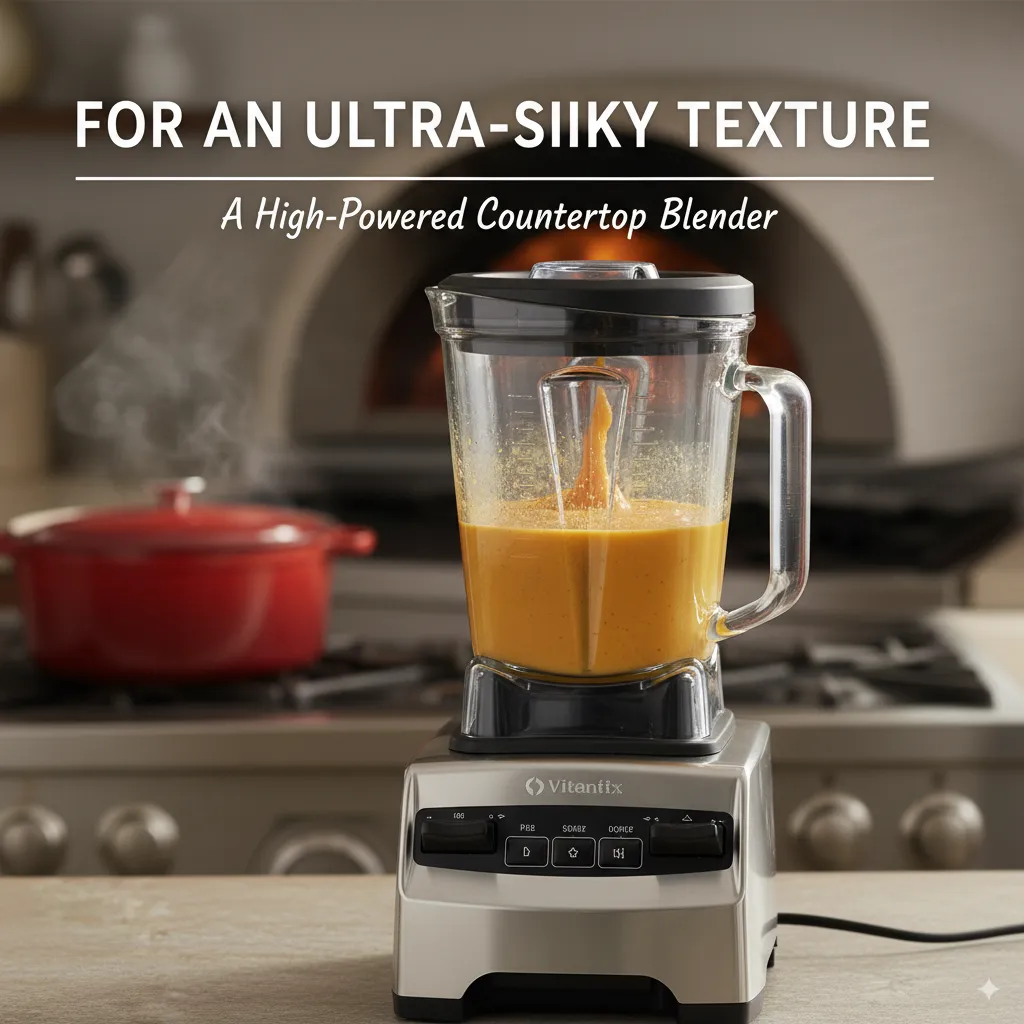
While an immersion blender is fantastic, a high-powered countertop blender can create an even silkier, more aerated texture for ultra-smooth soups and purees. If you have one, it’s a great option, but I wouldn’t call it an absolute essential if you have an immersion blender.
Fine-Mesh Strainer
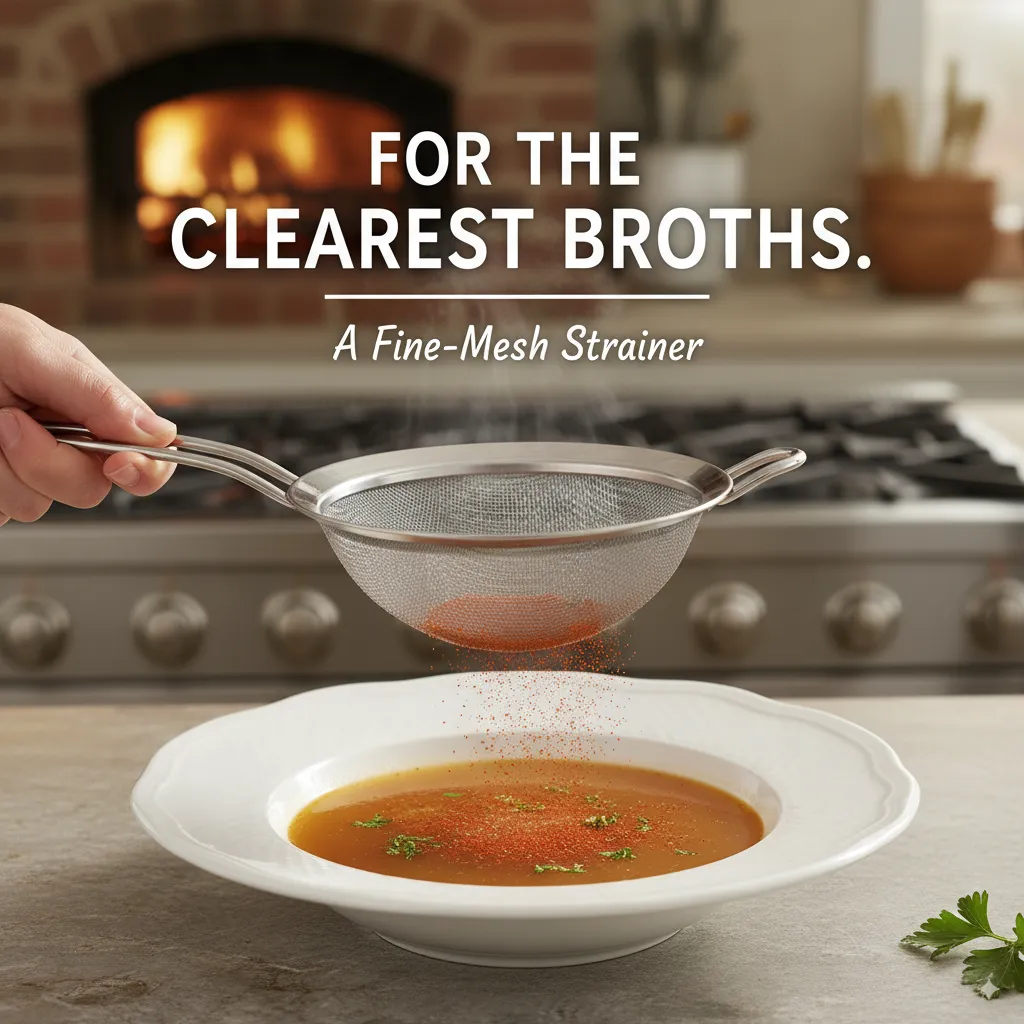
For the clearest broths and consommés, a fine-mesh strainer is non-negotiable. It’s also perfect for dusting a little paprika or parsley over a finished bowl for a beautiful presentation.
Quality Storage Containers
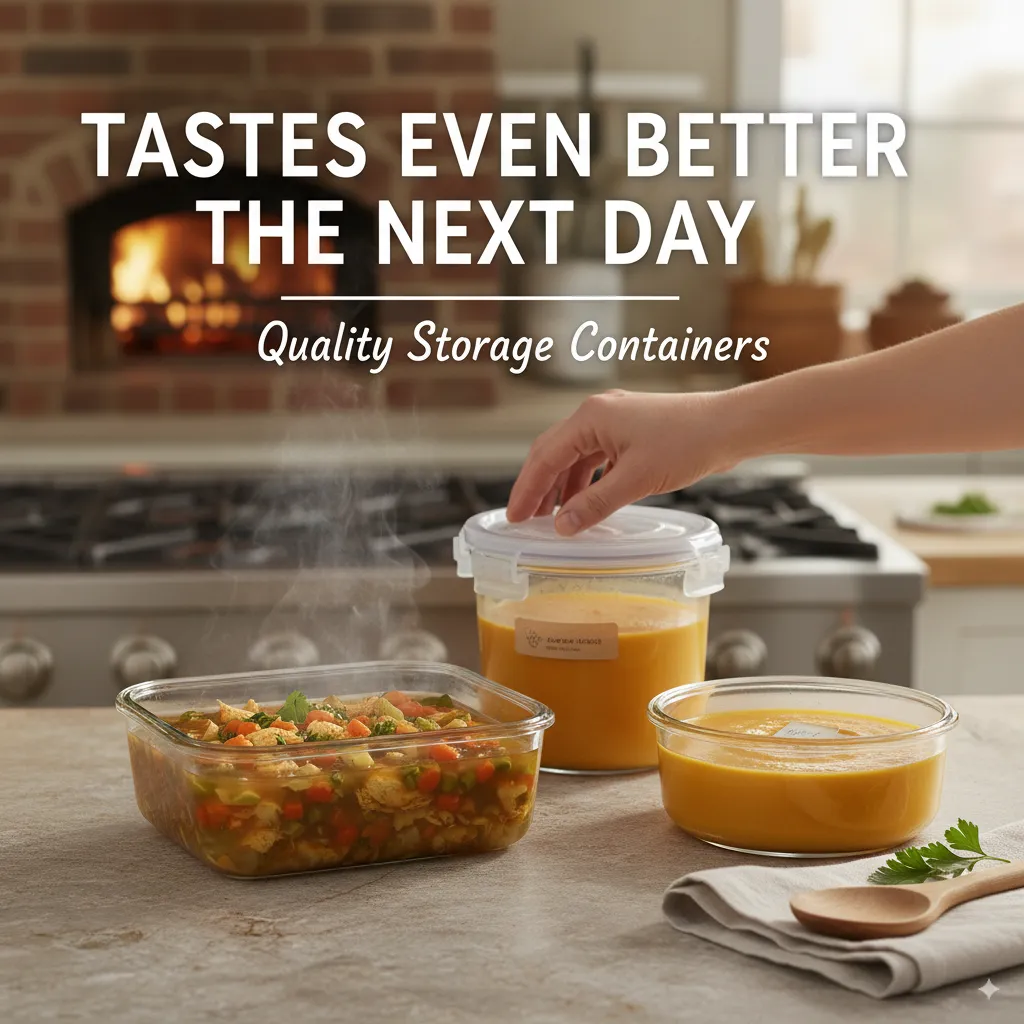
Soup is famous for its ability to taste even better the next day. Having a set of airtight glass or plastic containers means you can store your leftovers safely and reheat them easily. Many are even freezer-safe, allowing you to keep soup for a quick future meal.
Frequently Asked Questions for What are the essential tools for making soup?
Can I make good soup without a Dutch oven?
Absolutely! A large, heavy-bottomed stockpot will work very well. The main goal is to use a pot with good heat distribution to avoid burning.
Is a food processor necessary for chopping vegetables?
Not at all. While a food processor can save time with large quantities, a sharp knife gives you more control over the size and shape of your chops, which affects the soup’s final texture. I find knife work to be quite therapeutic!
What’s the one tool you wouldn’t skip?
Besides a good pot and knife, I would never skip an immersion blender. Its versatility and safety for pureeing hot soups make it invaluable in my kitchen.
A Few Parting Words
“You don’t need a silver fork to eat good food.” – Paul Prudhomme
Building your soup-making toolkit is a personal process. Start with the basics: a great pot, a sharp knife, and a wooden spoon. As you make more soup, you’ll discover which additional tools fit your style and make your time in the kitchen more fun.
“The only real stumbling block is fear of failure. In cooking you’ve got to have a what-the-hell attitude.” – Julia Child
Don’t be afraid to experiment. The best soups often come from a bit of improvisation and using what you have on hand. The tools are there to help you, not limit you.
“Good soup is one of the prime ingredients of good living.” – Louis P. De Gouy
At the end of the day, making soup is an act of care—for yourself and for others. It’s about nourishment, comfort, and simplicity. With these essential tools by your side, you’re well on your way to filling your home with the incredible, heartwarming smell of a homemade soup simmering on the stove. Now, go get cooking
